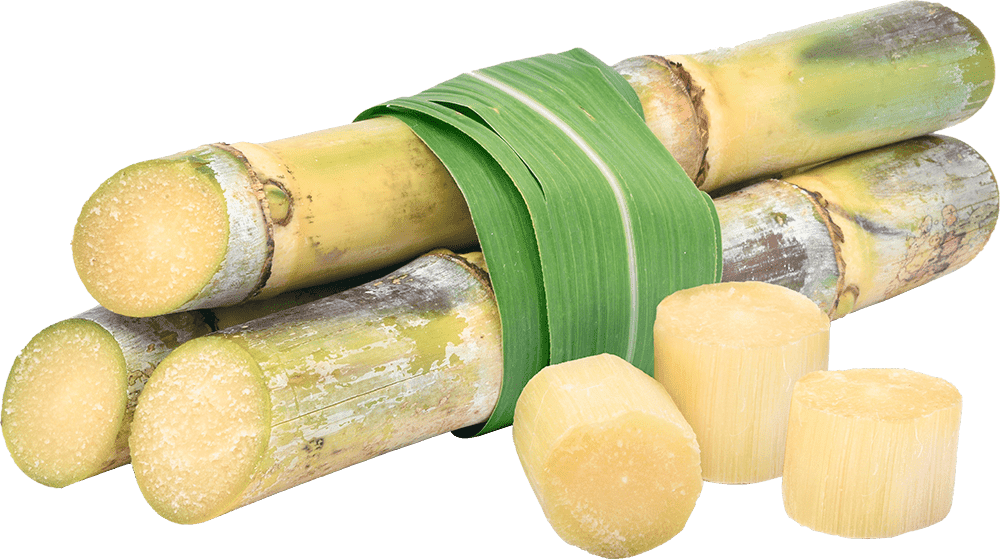A Comprehensive Guide to the Ecological Effect and Sustainability Practices in Walking Stick Sugar Processing
The ecological impact of walking stick sugar processing presents a complex selection of difficulties that warrant mindful examination. From dirt degradation and excessive water usage to the carbon footprint connected with farming and manufacturing, the effects of traditional methods are far-reaching. What particular practices can be applied to strike a balance in between performance and ecological stewardship?
Introduction of Walking Stick Sugar Handling
Cane sugar processing includes a series of systematic actions that change sugarcane right into refined sugar. Originally, gathered sugarcane is delivered to processing facilities, where it undergoes cleansing to get rid of soil and debris. Following this, the walking stick is crushed to extract juice, which is then made clear by getting rid of pollutants with home heating and the addition of lime.
The cleared up juice undergoes evaporation, where water is removed to concentrate the sugar material. This focused syrup is after that crystallized through air conditioning, allowing sugar crystals to develop. These crystals are divided from the remaining syrup using centrifugation, resulting in raw sugar. To accomplish refined sugar, the raw product undertakes further purification processes, which may include filtering system and washing to remove staying pollutants and color.
The end product is then dried and packaged for circulation. Throughout this entire process, maintaining performance and quality control is vital to make sure the sugar fulfills sector standards. Each action in walking stick sugar processing not just adds to the final item however also has ramifications for resource usage and waste generation, setting the phase for discussions on sustainability and environmental effects related to sugar manufacturing.
Environmental Obstacles of Production
The manufacturing of cane sugar offers a number of significant environmental challenges that warrant interest. One primary concern is the extensive usage of agrochemicals, consisting of pesticides and plant foods, which can bring about dirt destruction, biodiversity loss, and contamination of regional water sources. The runoff from sugarcane fields usually lugs these chemicals right into neighboring ecological communities, interfering with water life and affecting the wellness of areas reliant on these water bodies.
One more obstacle is the high power consumption related to sugarcane handling. The boiling and refining stages need significant heat, mainly produced by burning fossil fuels, adding to greenhouse gas exhausts. Furthermore, the extensive acreage needed for sugarcane cultivation can bring about logging and habitat devastation, more intensifying environment modification and harmful wildlife.
In addition, the labor practices in some areas raise moral issues, as employees might deal with poor working conditions and poor incomes. This situation frequently perpetuates a cycle of destitution in regional neighborhoods. Cane Sugar Processing. Dealing with these ecological obstacles is crucial for establishing extra lasting techniques in walking cane sugar manufacturing, inevitably benefiting both the setting and the neighborhoods involved in this industry
Water and Land Use Impact
Water sources and land utilization are essential elements in the walking cane sugar sector that substantially influence the setting. The growing of sugarcane needs substantial water input, with quotes suggesting that it can eat up to 2,000 litres of water per kilo of sugar created. This intensive use water often causes deficiency of local water resources, impacting not only the sugarcane vineyards but likewise bordering communities and areas that rely on the very same water sources for agriculture and domestic usage.

Moreover, land usage for sugarcane growing can lead to deforestation and the conversion of natural environments into monoculture haciendas. This practice lessens biodiversity, disrupts local communities, and adds to soil deterioration. The expansion of sugarcane areas often intrudes on valuable farming land, developing competitors for sources in between food and biofuel manufacturing.
Sustainable methods, such as optimizing irrigation methods and implementing plant rotation, are important to mitigate these effects. By embracing a lot more reliable water usage and land management strategies, the walking cane sugar sector can reduce its ecological footprint, making sure a balance between agricultural performance and environmental preservation.
Greenhouse Gas Emissions
Greenhouse gas discharges stand for a considerable environmental issue within the walking cane sugar processing sector, particularly as farming practices increase to fulfill global need. The growing of sugarcane, a crop that grows in exotic climates, counts greatly description on synthetic plant foods and chemicals, which contribute to laughing gas exhausts. Furthermore, land-use adjustments, consisting of logging for brand-new sugarcane haciendas, release carbon dioxide stored in vegetation and soil.
Throughout handling, power intake is one more significant source of greenhouse gas exhausts - Cane Sugar Processing. Several sugar mills utilize nonrenewable fuel sources to power equipment and produce warmth, resulting in considerable carbon footprints. Furthermore, the transportation of raw sugarcane and ended up products includes layers of emissions with fuel combustion in automobiles
This includes evaluating current farming practices, refining approaches, and transport systems to identify locations for renovation and mitigation. Resolving greenhouse gas discharges is necessary for promoting a much more lasting walking stick sugar market in an altering climate.

Lasting Practices and Innovations
Sustainable techniques and developments are increasingly important in the cane sugar processing market as stakeholders look for to lower environmental impacts while maintaining productivity. One considerable development is the implementation of integrated crop monitoring, which optimizes resource use by integrating dirt monitoring, parasite control, and plant rotation techniques. This method improves return while reducing chemical inputs and protecting soil wellness.
Furthermore, the adoption of renewable power sources, such as biomass from sugarcane residues, has acquired grip - Cane Sugar Processing. By transforming waste products into energy, processing facilities can reduce their reliance on fossil gas, thereby lowering greenhouse gas emissions
Water management practices have also seen renovations through the recycling and reusing of water in handling plants, dramatically decreasing freshwater usage. Innovations in technology, such as precision agriculture, enable farmers to keep track of crop health and wellness and source use better, making certain sustainable growing practices.
Moreover, accreditation programs like Fair Profession and Jungle Alliance encourage environmentally accountable farming methods and advertise social equity within you could try this out the supply chain. By embracing these lasting methods and developments, the cane sugar handling industry can boost its strength and add positively to ecological stewardship.
Final Thought
The ecological impact of cane sugar handling provides significant difficulties, consisting of dirt degradation, high water intake, and greenhouse gas discharges, alongside ethical issues related to labor techniques. Attending to these problems through sustainable methods, such as integrated crop administration, renewable power fostering, and water recycling, is crucial. By advertising socially fair and ecologically accountable approaches in sugar manufacturing, the market can reduce its adverse impacts, making sure an extra lasting future for both communities and neighborhoods associated with this sector.
Walking cane sugar handling involves a collection of methodical actions that change sugarcane right into polished sugar. Each step in cane sugar processing not just contributes to the final item however likewise has effects article for source use and waste generation, setting the stage for discussions on sustainability and environmental impacts associated with sugar production.
Greenhouse gas emissions stand for a significant ecological issue within the walking cane sugar processing industry, particularly as farming techniques increase to satisfy international demand.Sustainable practices and advancements are significantly crucial in the walking cane sugar handling sector as stakeholders look for to minimize ecological impacts while maintaining performance.The ecological effect of cane sugar handling offers substantial challenges, consisting of soil degradation, high water usage, and greenhouse gas discharges, together with moral issues associated to labor methods.
Comments on “Comprehending Cane Sugar Processing: A Comprehensive Introduction of the Stages”